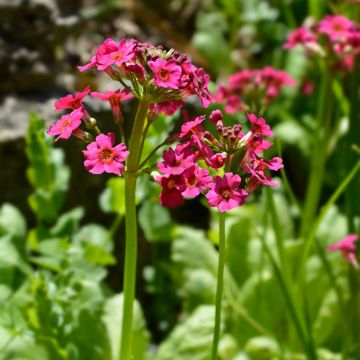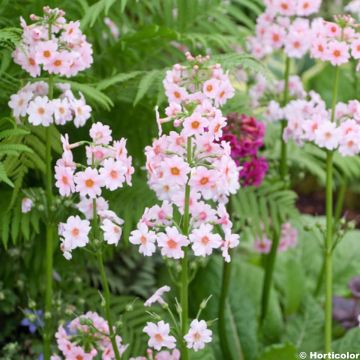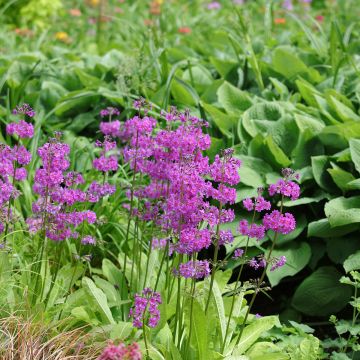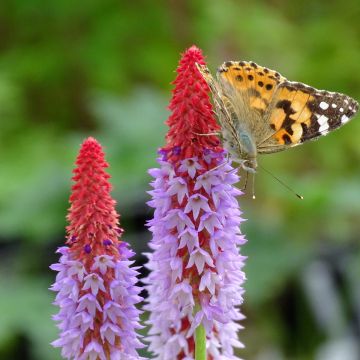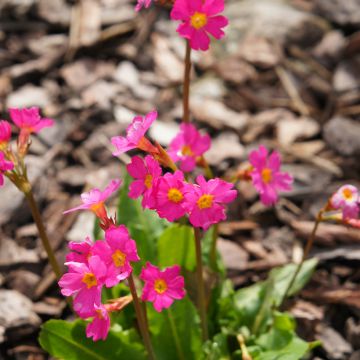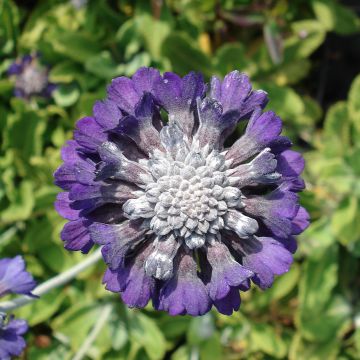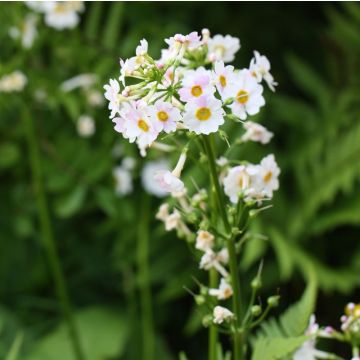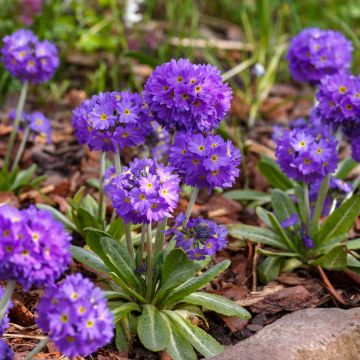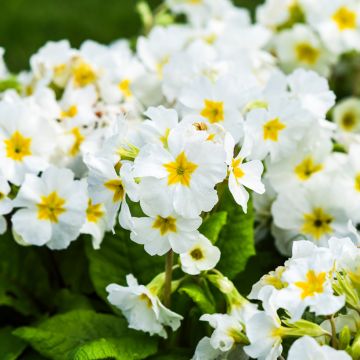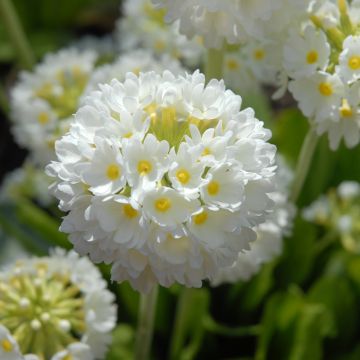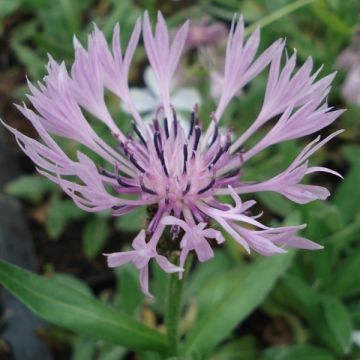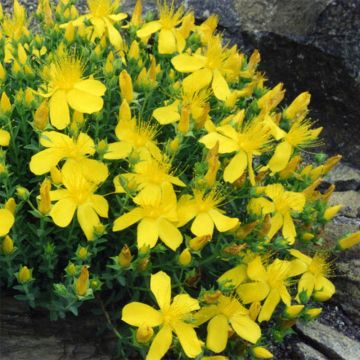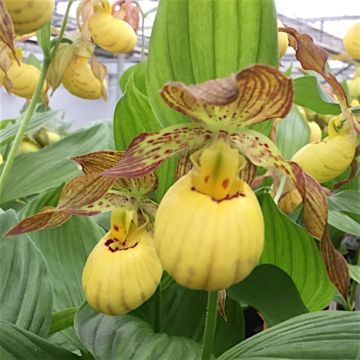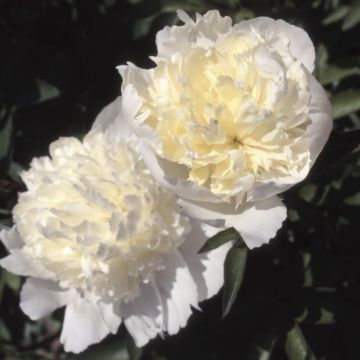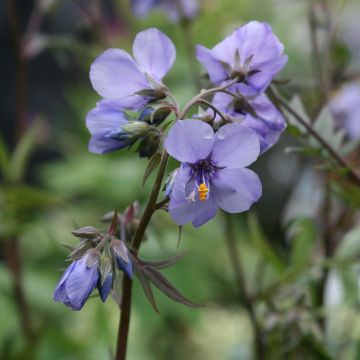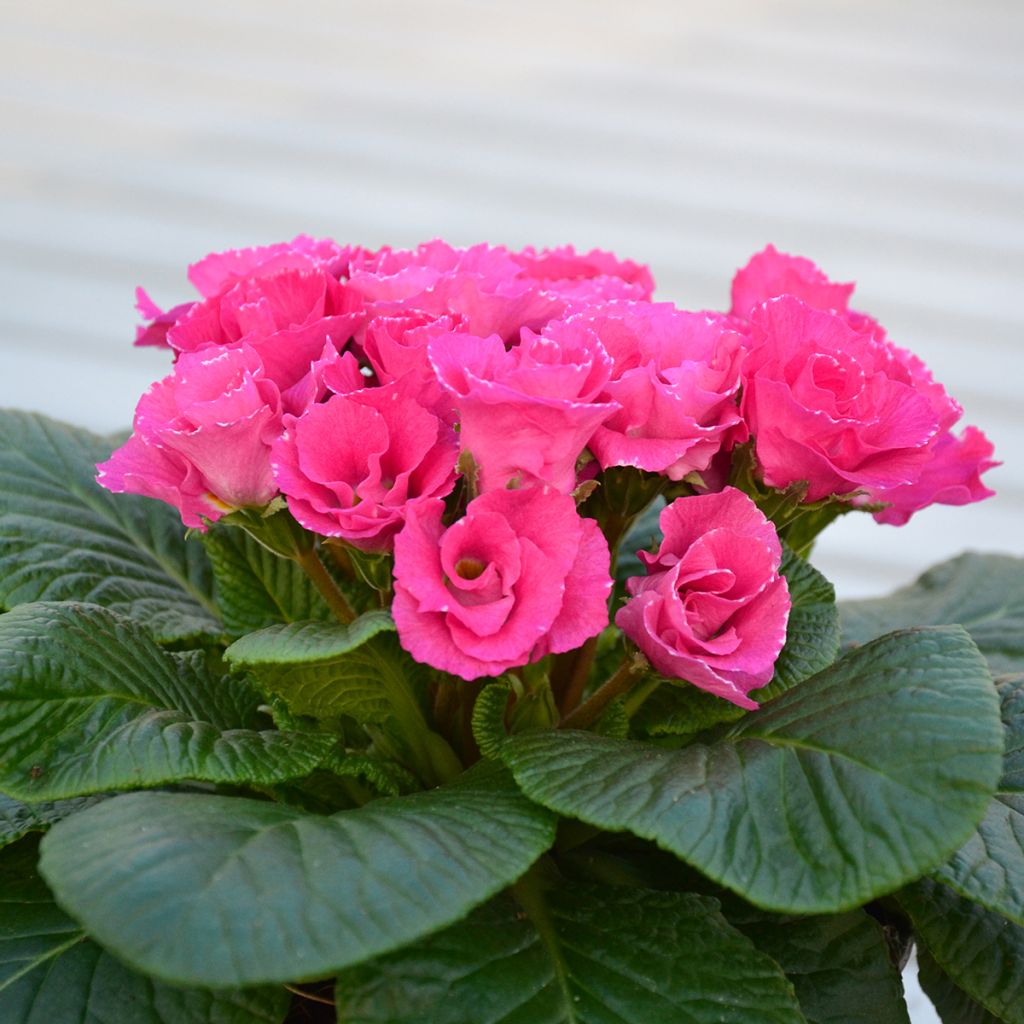

Primula vulgaris Rosebud F1 Rose Shades - English Primrose
Primula vulgaris Rosebud F1 Rose Shades - English Primrose
Primula vulgaris Rosebud F1 Rose Shades
Primrose, Common Primrose, English Primrose
Why not try an alternative variety in stock?
View all →This plant carries a 6 months recovery warranty
More information
We guarantee the quality of our plants for a full growing cycle, and will replace at our expense any plant that fails to recover under normal climatic and planting conditions.
From €5.90 for pickup delivery and €6.90 for home delivery
Express home delivery from €8.90.
From €5.90 for pickup delivery and €6.90 for home delivery
Express home delivery from €8.90.
Does this plant fit my garden?
Set up your Plantfit profile →
Description
The Primula acaulis Rosebud F1 'Rose Shades' is a garden primrose with flowers resembling just-opened roses, in a beautiful shade of pink fuchsia. They rise like a bouquet of roses above a lush ornamental foliage in dark green with black highlights. Semi-double, its small petals are tightly curled and undulated, appearing from December through the entire month of January. These new varieties bring these classic perennials, often grown as biennials, back into the spotlight. They are perfect in pots, containers, flower beds, borders, and thrive in sunny or semi-shaded areas, in fertile and moist soil.
The Primula Rosebud F1 'Rose Shades' is a herbaceous perennial plant from the primrose family, derived from Primula vulgaris or Primula acaulis that can be found in meadows and woodlands. It is a floriferous plant, forming a lovely clump of foliage within a few months, reaching heights of 15 to 20 cm (6 to 8in) and widths of 20 to 25 cm (8 to 10in). It develops more or less evergreen rosettes of veined and wavy leaves, with an oval shape and a good size, in a beautiful dark green colour with hints of almost black. 'Rose Shades' produces small semi-double flowers resembling just bloomed roses, with undulated and tightly curled petals, in a vibrant pink fuchsia shade.
The stemless Rosebud F1 'Rose Shades' primrose is a very early plant, flowering at a time when few other blooms are present in the garden and on balconies. Reliable and easy to grow, it surprises with its rose-like flowers, barely taller than its opulent and ornamental cushion of foliage. Whether in flower beds or containers on a balcony, it precedes the first early year blooms of late winter bulbs and other primroses. It can be paired with bushes or Hellebores, and small hybrid cyclamens. Primroses find their place in the garden in borders, under the cover of bushes, in rockeries, among snowdrops and violets. The leaves and flowers are edible and can be consumed raw or cooked.
Benefits: the flowers have soothing and calming properties and are used in expectorant preparations. The leaves help prevent bruising, and the entire plant (especially the root) has analgesic, antispasmodic, diuretic, and expectorant properties.
Report an error about the product description
Flowering
Foliage
Plant habit
Botanical data
Primula
vulgaris
Rosebud F1 Rose Shades
Primulaceae
Primrose, Common Primrose, English Primrose
Cultivar or hybrid
Other Primula - Primroses
Planting and care
Primroses can be planted in pots and flower beds or directly in the ground in finely prepared and enriched soil. Plant them as soon as possible upon receipt, in September-October or March-April. If the intended location is not yet ready or the conditions are unfavourable for planting, you can let them grow in pots for 4 to 6 weeks.
In pots and flower beds, use a good potting soil for flowering plants (geranium potting soil) enriched with clay and slow-release fertiliser, lightweight and well-draining. The top of the plug plant should be level with the potting soil. Water generously at planting and during the following weeks, as plug plants can quickly dry out. However, be careful not to overwater! Make sure to use containers with drainage holes and empty the saucer 10 minutes after watering. Remember to water even during winter if it doesn't rain or if the container is placed in a sheltered spot. Do not water during freezing periods.
Very floriferous and fast-growing, primroses are nutrient-demanding plants. As soon as growth resumes, at the end of February or early March, and throughout the flowering period, apply a liquid fertiliser for flowering plants containing iron and trace elements 1 to 2 times a week in the watering can. Remove faded flowers to promote new blooms. Once the flowering is over, potted plants can be replanted in the garden in semi-shade.
Planting period
Intended location
Care
This item has not been reviewed yet - be the first to leave a review about it.
Spring flowering perennials
Haven't found what you were looking for?
Hardiness is the lowest winter temperature a plant can endure without suffering serious damage or even dying. However, hardiness is affected by location (a sheltered area, such as a patio), protection (winter cover) and soil type (hardiness is improved by well-drained soil).

Photo Sharing Terms & Conditions
In order to encourage gardeners to interact and share their experiences, Promesse de fleurs offers various media enabling content to be uploaded onto its Site - in particular via the ‘Photo sharing’ module.
The User agrees to refrain from:
- Posting any content that is illegal, prejudicial, insulting, racist, inciteful to hatred, revisionist, contrary to public decency, that infringes on privacy or on the privacy rights of third parties, in particular the publicity rights of persons and goods, intellectual property rights, or the right to privacy.
- Submitting content on behalf of a third party;
- Impersonate the identity of a third party and/or publish any personal information about a third party;
In general, the User undertakes to refrain from any unethical behaviour.
All Content (in particular text, comments, files, images, photos, videos, creative works, etc.), which may be subject to property or intellectual property rights, image or other private rights, shall remain the property of the User, subject to the limited rights granted by the terms of the licence granted by Promesse de fleurs as stated below. Users are at liberty to publish or not to publish such Content on the Site, notably via the ‘Photo Sharing’ facility, and accept that this Content shall be made public and freely accessible, notably on the Internet.
Users further acknowledge, undertake to have ,and guarantee that they hold all necessary rights and permissions to publish such material on the Site, in particular with regard to the legislation in force pertaining to any privacy, property, intellectual property, image, or contractual rights, or rights of any other nature. By publishing such Content on the Site, Users acknowledge accepting full liability as publishers of the Content within the meaning of the law, and grant Promesse de fleurs, free of charge, an inclusive, worldwide licence for the said Content for the entire duration of its publication, including all reproduction, representation, up/downloading, displaying, performing, transmission, and storage rights.
Users also grant permission for their name to be linked to the Content and accept that this link may not always be made available.
By engaging in posting material, Users consent to their Content becoming automatically accessible on the Internet, in particular on other sites and/or blogs and/or web pages of the Promesse de fleurs site, including in particular social pages and the Promesse de fleurs catalogue.
Users may secure the removal of entrusted content free of charge by issuing a simple request via our contact form.
The flowering period indicated on our website applies to countries and regions located in USDA zone 8 (France, the United Kingdom, Ireland, the Netherlands, etc.)
It will vary according to where you live:
- In zones 9 to 10 (Italy, Spain, Greece, etc.), flowering will occur about 2 to 4 weeks earlier.
- In zones 6 to 7 (Germany, Poland, Slovenia, and lower mountainous regions), flowering will be delayed by 2 to 3 weeks.
- In zone 5 (Central Europe, Scandinavia), blooming will be delayed by 3 to 5 weeks.
In temperate climates, pruning of spring-flowering shrubs (forsythia, spireas, etc.) should be done just after flowering.
Pruning of summer-flowering shrubs (Indian Lilac, Perovskia, etc.) can be done in winter or spring.
In cold regions as well as with frost-sensitive plants, avoid pruning too early when severe frosts may still occur.
The planting period indicated on our website applies to countries and regions located in USDA zone 8 (France, United Kingdom, Ireland, Netherlands).
It will vary according to where you live:
- In Mediterranean zones (Marseille, Madrid, Milan, etc.), autumn and winter are the best planting periods.
- In continental zones (Strasbourg, Munich, Vienna, etc.), delay planting by 2 to 3 weeks in spring and bring it forward by 2 to 4 weeks in autumn.
- In mountainous regions (the Alps, Pyrenees, Carpathians, etc.), it is best to plant in late spring (May-June) or late summer (August-September).
The harvesting period indicated on our website applies to countries and regions in USDA zone 8 (France, England, Ireland, the Netherlands).
In colder areas (Scandinavia, Poland, Austria...) fruit and vegetable harvests are likely to be delayed by 3-4 weeks.
In warmer areas (Italy, Spain, Greece, etc.), harvesting will probably take place earlier, depending on weather conditions.
The sowing periods indicated on our website apply to countries and regions within USDA Zone 8 (France, UK, Ireland, Netherlands).
In colder areas (Scandinavia, Poland, Austria...), delay any outdoor sowing by 3-4 weeks, or sow under glass.
In warmer climes (Italy, Spain, Greece, etc.), bring outdoor sowing forward by a few weeks.

































